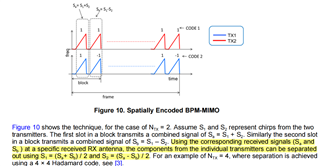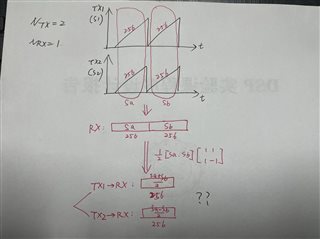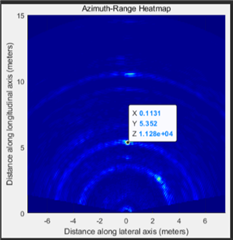Hello,
I see the MIMO document introduces that BPM can set the phase.

I notice that this separation method .
what I understand this case: Assuming that each chirp has 256 sampling points, two antennas transmit two chirps, and one receiving antenna receives 256*2 data, I need to separate TX1-Rx and TX2-Rx, and there should be two groups of 256*2 data, so how should I get it?
According to the method in the document, I only got a column of 2*256 data. Am I making a mistake?
Is there any problem with my understanding according to the following graph?
In the graph, I multiply the received data by a 2*2 Hadamard matrix to get 2*512 data. Is that a problem? If, according to my understanding, bothTX1-RX parts are equal to 0.5* (Sa+Sb), how can I solve this problem?

Thank you





